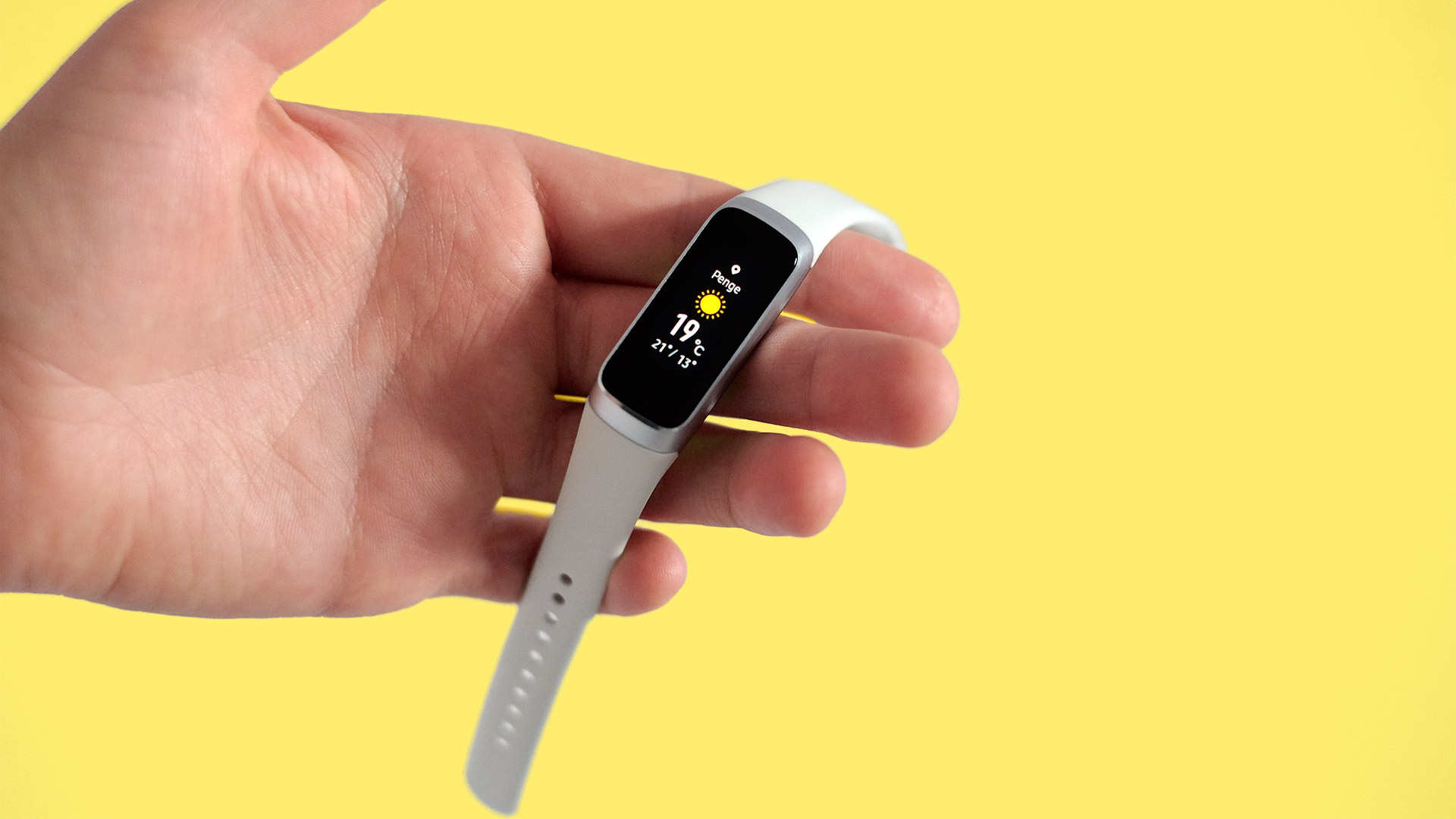Why you can trust TechRadar
Fitness tracking and performance
- Run, swim and cycle tracking
- Auto tracking and pausing
- No GPS or connected GPS, poor distance accuracy
The Galaxy Fit is a simple tracker by Samsung standards. The company often over-fills bands with tech, which leads to trackers like the Gear Fit 2 Pro. That was an impressive gadget, but the screen was a little too large for some tastes.
This is much closer to the entry-level tracker standard. And flicking through its interface screens does not feel entirely slick, quick or fluid. The software and chipset also seem a step down from Samsung’s norm.
It does not have its own GPS chip either, used to track runs and cycles so you can see your route later on a map.
That’s common for bands in this class, but the Galaxy Fit also lacks connected GPS. This feature uses your phone’s GPS to get you more-or-less the full runner’s watch experience (with accurate tracking data) as long as you bring your phone along when you go for a jog. The Fitbit Inspire HR has it, the Fit does not.
It makes one of the Samsung Galaxy Fit's tracking options baffling. There are modes for walking, running, swimming, cycling and ‘other’ (this just measures your heart rate and the tracking duration).
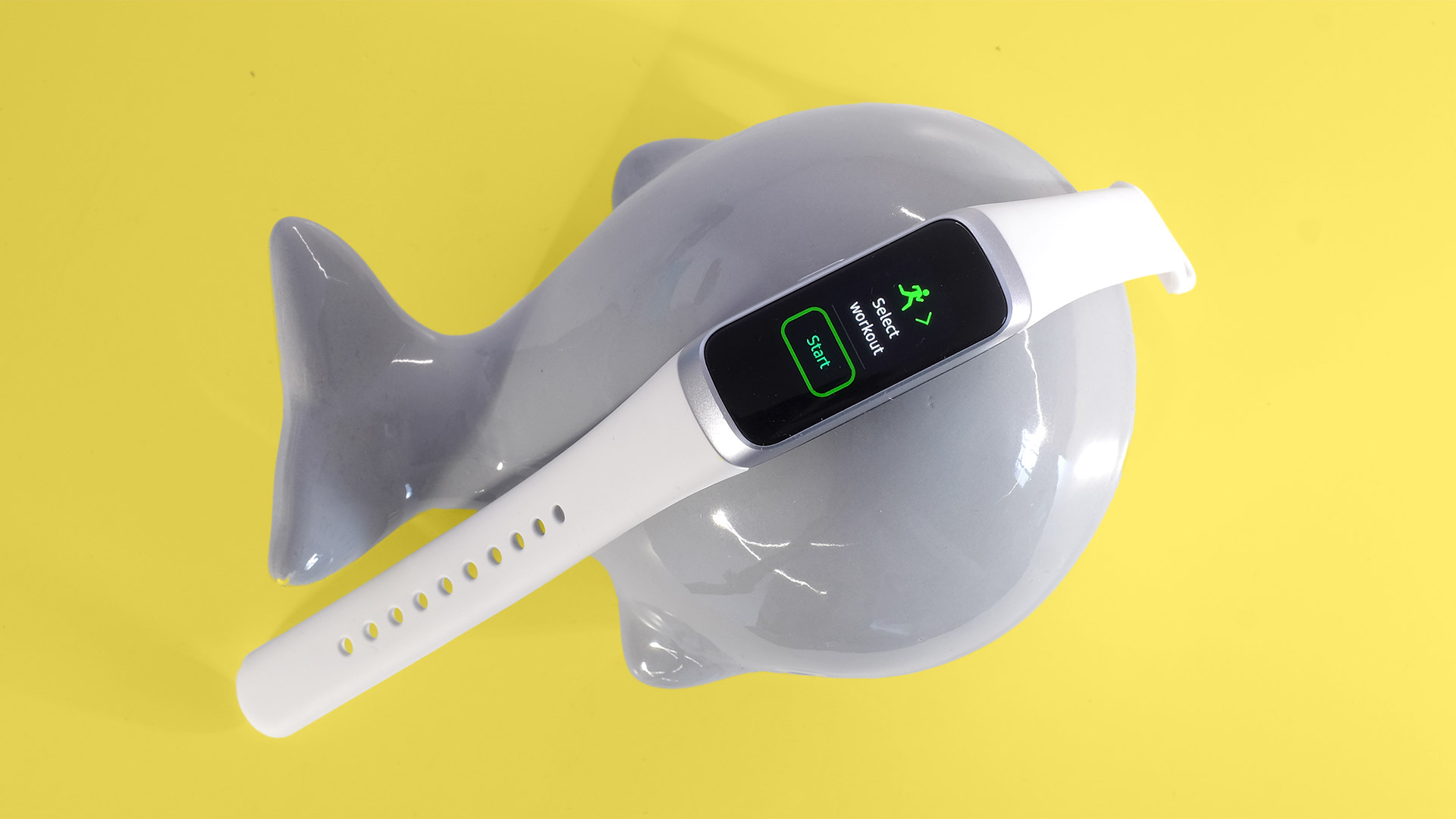
Walking and running can theoretically be tracked pretty well with motion sensors. Swimming uses an algorithm that works out when you’ve reached a length based on your arm movements. You can set the pool size in the companion app. But cycling? Trying to track that beyond time and heart rate with a gyroscope and accelerometer makes no sense.
And it makes us wonder whether Samsung plans to add connected GPS to the Galaxy Fit in a software update. Huawei and Honor have done so in the past with some of their bands.
Hopefully it will, because the Galaxy Fit’s distance tracking in its current state is very poor.
We tend to run a familiar route with fitness trackers. We could tell you when the 2km, 3km and 5km marks are just from experience. And the Fit initially seemed way off, hugely underestimating distance.
We dug into the companion apps to check our profile didn’t have the wrong height listed, which will obviously throw off the results. All the information was correct. We then reset and re-paired the Galaxy Fit and went for a few more runs over the next week, with the Galaxy Fit on one arm and a Garmin Fenix 5 Plus on the other. That has a GPS chip, and records distance fairly accurately.
Nothing changed. When the Fit reported 4.91km, the Fenix 5 Plus showed 6.58km. On another run, the Fit displayed 3.46km when the Fenix showed 4.52km. It only records 75-77% of the actual distance traveled, which is a huge disparity.
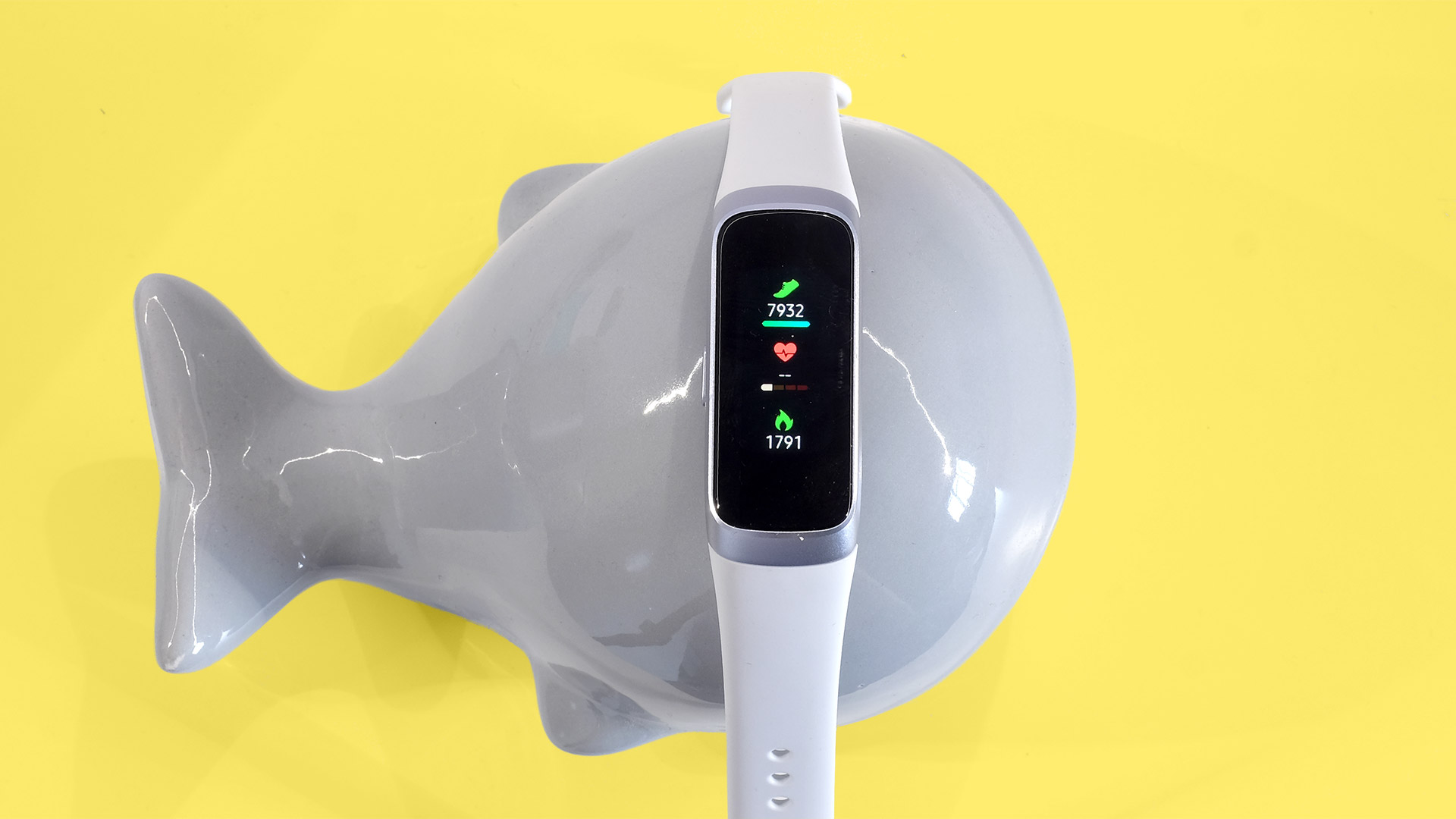
There’s good news, though. As the difference is consistent, Samsung should be able to fix it with a software update, and the actual step counts are reasonable enough. But right now, it’s useless for run tracking.
It also takes quite a light approach to heart rate tracking, but this is mostly down to the Samsung Health app where your data ends up. You’ll see a graph of your heart rate mapped against your pace for each tracked activity, but as you can’t dig into the data much, it’s hard to tell how accurate the readings really are.
They at least appear solid enough, though, so should be sufficient for the sort of breezy exercise monitoring that suits a lower-price fitness band.
We are less impressed with the at-rest heart rate readings. A few times we’ve noticed it recording a rate in the 115-120 range while sat at a desk, despite a regular resting heart rate of 57-60bpm. It seems to have a habit of double-registering beats.
The Samsung Galaxy Fit also has some added exercise smarts. It starts auto-tracking runs and walks, and pauses manually tracked ones if you stop for more than a few seconds.
We will likely turn off the auto detection feature going forwards, though, as you end up with a string of entries representing every time you pop out to a shop. That’s what your global step count is there for.
Features
- Notifications
- Stress tracking
- Sleep tracking
The Fit also has a few extra features. It claims to measure your stress, and auto-records readings (if you switch the feature on) throughout the day.
Heading into the app to check out the results, there are some high and low readings. However, as a lot of the ‘high’ results are the result of the Galaxy Fit’s dodgy resting heart rate readings, it’s hard to put too much faith in the stress feature.
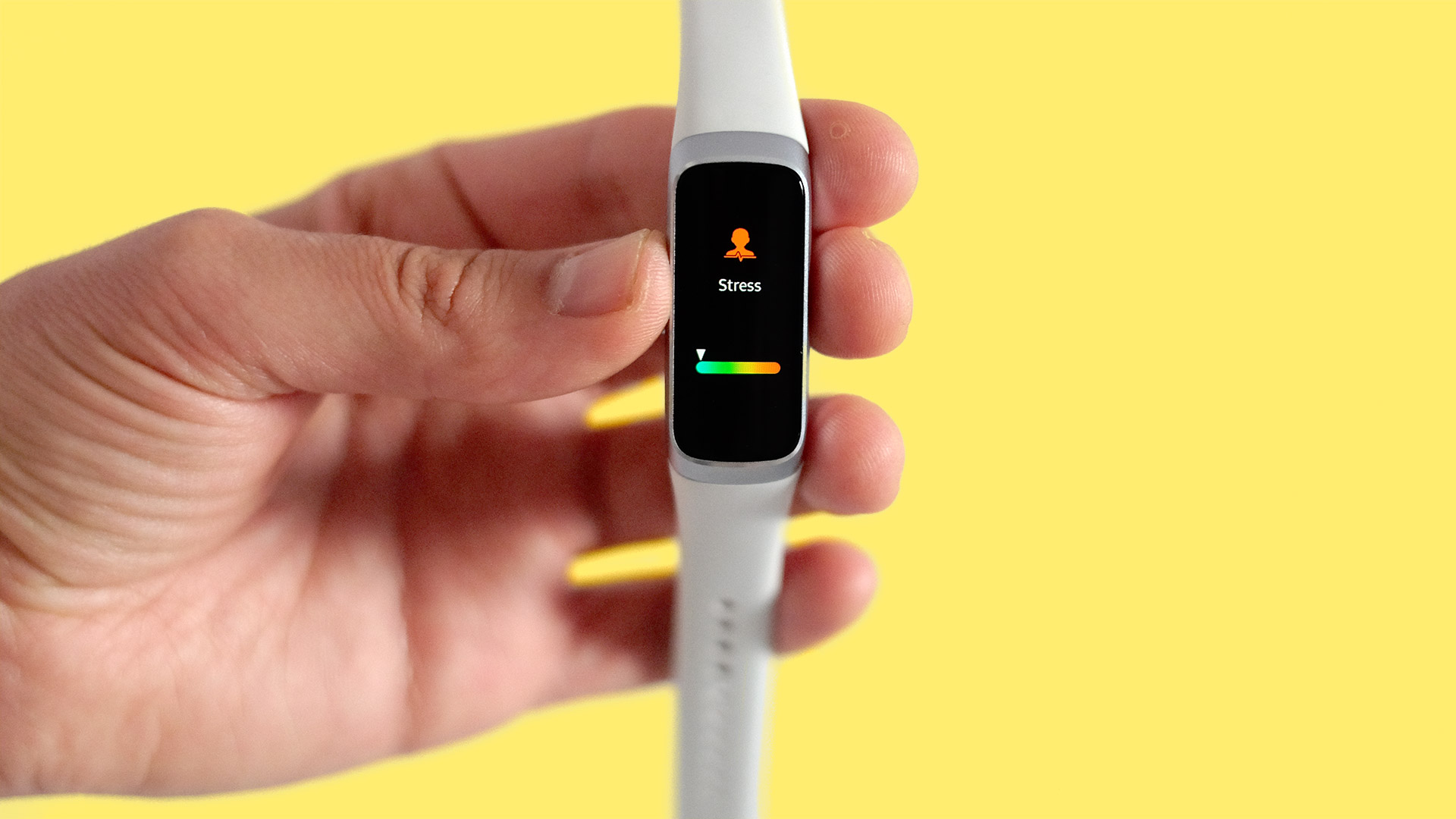
There are also no guided breathing exercises here, seen in some other bands. We don’t use these much, but they are a genuinely useful way to get some control over stress and anxiety if you do not already have experience with breathing techniques.
The Samsung Galaxy Fit also handles notifications. You can read your WhatsApp messages, and see incoming calls on the band. You can choose the apps that get through to the band, and reply to messages with canned replies. A few are pre-set but you can write more in the app.
Complaints? Like most bands at this level the notifications are no good for looking over strings of messages. And it’s too easy to accidentally send a reply via the Galaxy Fit, but you can turn the feature off. However, it’s a quick and easy way to review messages, and you get a little vibrate buzz when they arrive. Notifications handling is fine.
The Samsung Galaxy Fit also has NFC, but you may wonder why. This tracker does not support Samsung Pay, a wireless payments platform, and NFC is not used in the pairing process. It’s used solely by the charger dock.
A couple of other features are worth a mention. The Samsung Galaxy Fit has a ‘find my phone’ button in its settings area. It sets off a ringtone on your mobile. The Fit will also track your sleep.
App and compatibility
- Android and iPhone support
- Samsung Health app
The Samsung Galaxy Fit will happily work with all recent Androids and iPhones. It simply requires an Android running version 5.0 or newer (and 1.5GB RAM) or an iPhone 7 with iOS 10 or newer.
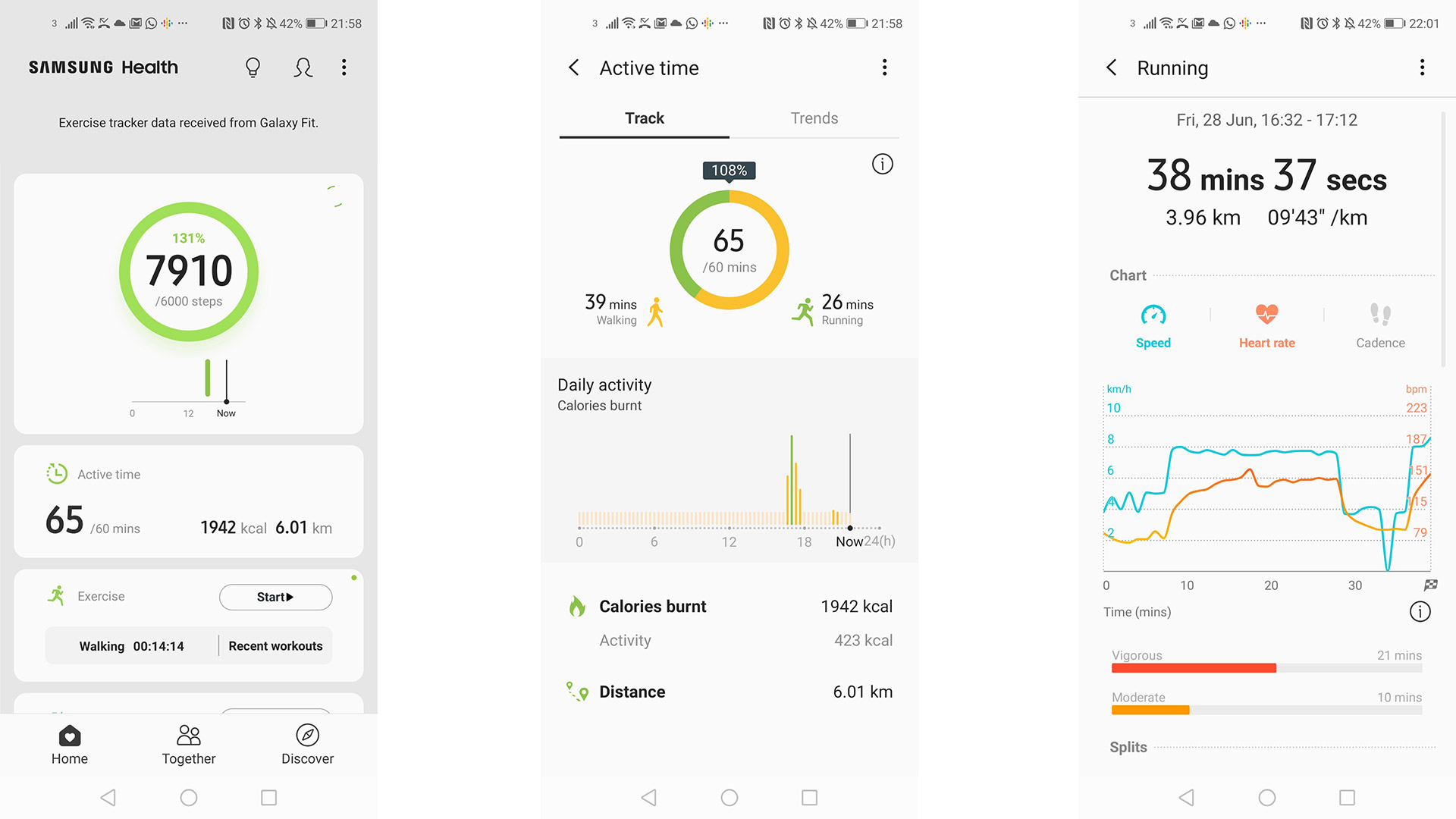
You need to install three apps to get the band working properly (on Android at least). There’s the Galaxy Wear app, where you fiddle with settings and the layout of the software’s home screens, a Galaxy Fit-specific plug-in, and Samsung Health. This is Samsung’s fitness and lifestyle tracker. It’s where all your data ends up.
Health is a pleasant app. Its interface is clean, there are some online challenges you can join in with. And it will connect to Strava to share data, although none of the other popular exercise tracker apps are let in. Samsung, unsurprisingly, wants you to use its own platform.
Current page: Fitness, features and app
Prev Page Introduction, design and display Next Page Battery life and verdictAndrew is a freelance journalist and has been writing and editing for some of the UK's top tech and lifestyle publications including TrustedReviews, Stuff, T3, TechRadar, Lifehacker and others.
